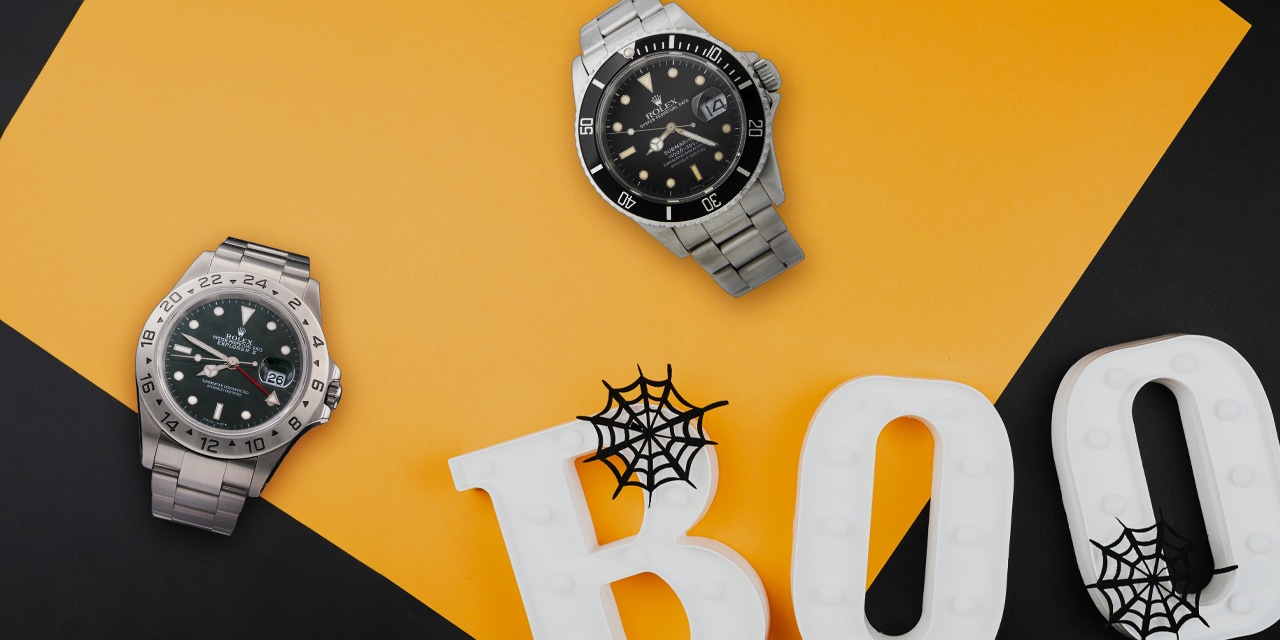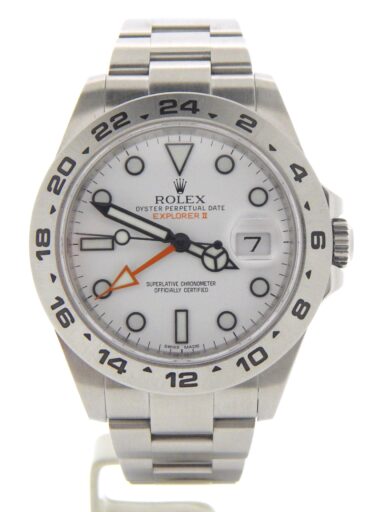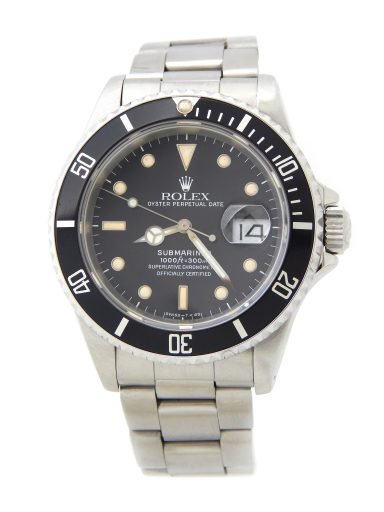No Tricks, Just Treats: The Beckertime Guide to the Best Rolex Watches for Halloween
I don’t know about you, but as I get older, Halloween is becoming my favorite holiday of the year.
Ok, it might be mainly because I want the excuse to eat my bodyweight in candy without judgement, but there are plenty of other great things about the spooky season.
Firstly, Halloween movies are the best. Then there’s the fun of carving pumpkins, trick or treating and scaring yourself stupid in a haunted house. Not to mention it all takes place at the most beautiful time of the year. And let’s not forget all that candy.
Perhaps the best part though, is dressing up. But, whether you’re a scary witch, a murderous clown or a zombie Homer Simpson, every creature of the night needs to know the time. (Especially if they’re a vampire).
Now, just because you’re playing make-believe, there’s no excuse for your wrist attire to be anything less than a graveyard smash, so we have put together our list of the best Rolex watches to complement your most petrifying creations.
Creeping it Real
The Rolex Explorer II ref. 1655
The debut Explorer II reference from 1971, the ref. 1655, has a lot going for it in the perfect Halloween watch stakes.
To start with, it was designed for cave divers, and if there’s a darker, more terrifying way to spend your time, I don’t know about it.
Mostly however, we need to look at the colors. Unlike the watch’s subsequent generations, the ref. 1655 was only offered with a black dial. So far so good. To that though, Rolex added a large, bright orange GMT hand, and black and orange make up the ideal Halloween palette.
However, the brand has offered other key watches over the years with the same two shades taking center stage.
The last two Explorer II iterations, the ref. 216570 and the ref. 226570, both have the reinstated Freccione hand and a black dial option, and the recently retired Milgauss came with a similar color scheme. The ref. 116400 could be had with a black face and an orange seconds hand in the shape of a lightning bolt, while the ref. 116400GV went a step further and covered the whole thing with a green tinted sapphire. So, why do we pick the ref. 1655 over those other models?
For the simple reason that the ref. 1655 is a vintage piece, meaning that the luminescent material used to paint the hands and hour markers will be tritium. A replacement for the hazardous radium, tritium was not only much safer but also brighter. However, as it ages, tritium itself starts to turn orange as well. And in collector circles, do you know what that’s called?
Pumpkin patina!
What a Tangled Web
The Rolex Spider Dial
As we all know, spiders are pure evil. Yes, I know they’re vital for the ecosystem and they eradicate crop-killing pests and yada yada yada. Don’t care, I hate them. Their hairy little legs freak me out and, being 6’6”, I’m always the first to discover a new web in the house as I walk into it face first and start breakdancing.
In fact, the only type of spiderweb I can tolerate is the one found on certain transitional Rolex watches from the 1980s.
The ‘80s was a time of great change for the brand as a whole. In response to the mauling Switzerland received at the hands of the Quartz Crisis, Rolex spent the decade pivoting away from their historical mission statement of producing fine mechanical watches for adventurers and businessmen and repositioned themselves instead as the purveyors of the ultimate aspirational lifestyle.
With that came a floor to ceiling upgrade of many of the elements which went into their timepieces. Sapphire crystals came in to replace acrylic, tool watch bezels became ratcheted, hour indexes were crafted from gold, bracelets got more solid links, etc.
One of the biggest changes, and a handy reference marker to determine the age of a particular model, was a swap from matte dials to glossy.
Rolex’s dials had actually started out with a gilt finish and were changed to matte in the mid to late ‘60s. By the 1980s, tastes had altered again and Rolex reverted back to gloss by giving their dials an extra layer of varnish.
But, in very un-Rolex fashion, the lacquer they used turned out not to be up to the job. On the earliest examples of watches with these new dials, the sheen was provided by an organic varnish called Zapon. Unfortunately, it was discovered that Zapon did not react well to prolonged exposure to UV rays or rapidly fluctuating temperatures, which caused it to crack, or ‘craze’ as it is known in the industry.
It left dials with a maze of thin, web-like fractures across the surface, leading to those models being described as the Spider Dials.
You will find spider dials across the entire range of Rolex watches produced in the early ‘80s. Everything from the Day-Date to the Submariner was affected and, of course, with vintage collecting being what it is, these models have an allure all their own, commanding premiums over others of the same reference which are in pristine condition.
All we know is that, for Halloween, they add a suitably spooky finishing touch.
May The Ghosts Be With You
The Rolex Ghost Bezel
Another defect accounts for the final ghoulish entry on our list.
Prior to Rolex introducing their own ceramic compound Cerachrom in 2005, the brand’s tool watch bezels were made from anodized aluminum.
An electrolytic process which coats the metal with a protective oxide layer, anodizing was also responsible for keeping the colors on the bezels bright and distinct.
However, over years of being exposed to the elements; the sun, salt water or merely continually being rubbed on clothing, that preserving layer wears away causing the colors to diminish considerably. When they have been faded and washed out to a sufficient degree, they become what have been christened Ghost Bezels.
As with the spider dials above, it is the rarity of ghost bezels which tends to increase their value. Rolex would replace a cracked dial or discolored surround during service as a matter of course, so those which remain original become highly sought after and more expensive.
Importantly, a nicely sun-bleached bezel is not the same as one in poor condition. The most prized examples are those with no other scratches or marks, which is a tall order seeing as it takes an especially long time for a bezel to fade in the first place.
This type of imperfection is restricted to Rolex sports watches, and particularly those two diving legends, the Submariner and Sea-Dweller. Yet, it is most noticeable, for obvious reasons, on vintage GMT-Master models, where the iconic two-color split has paled to a shadow of its former self.
Whatever you are doing this Halloween, everyone at Beckertime wishes you the happiest and creepiest of holiday seasons.
Featured Photo: Karolina Kaboompics via Pixabay (cc) & BeckerTime’s Archive.











